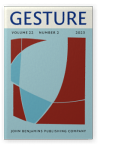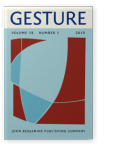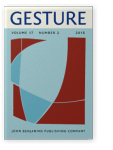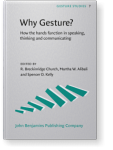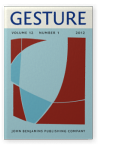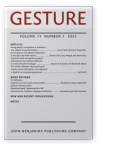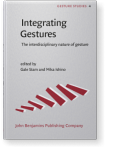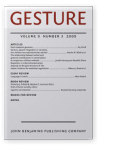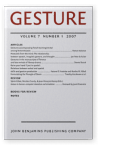Autumn Hostetter
List of John Benjamins publications for which Autumn Hostetter plays a role.
Journal
2019 Teachers’ attitudes about gesture for learning and instruction Gesture 18:1, pp. 31–56 | Article
We developed and tested a survey instrument to measure teachers’ attitudes about gesture in learning and instruction (TAGLI). Teachers (N = 192) generally believed that instructional gestures are beneficial for learning, and not distracting for students. Teachers had positive expectations, both… read more
2018 Does seeing gesture lighten or increase the load? Effects of processing gesture on verbal and visuospatial cognitive load Gesture 17:2, pp. 268–290 | Article
We examined the cognitive resources involved in processing speech with gesture compared to the same speech without gesture across four studies using a dual-task paradigm. Participants viewed videos of a woman describing spatial arrays either with gesture or without. They then attempted to choose… read more
2017 Chapter 2. Representational gestures help speakers package information for speaking Why Gesture?: How the hands function in speaking, thinking and communicating, Church, Ruth Breckinridge, Martha W. Alibali and Spencer D. Kelly (eds.), pp. 15–37 | Chapter
Abstract
The Information Packaging Hypothesis (IPH; Kita, 2000) holds that gesture helps speakers package information into units appropriate for verbalization. When information packaging is more difficult, speakers produce more gestures. Further, manipulations of gesture can affect… read more
2017 Chapter 7. Gestures highlight perceptual-motor representations in thinking Why Gesture?: How the hands function in speaking, thinking and communicating, Church, Ruth Breckinridge, Martha W. Alibali and Spencer D. Kelly (eds.), pp. 155–174 | Chapter
Abstract
Gestures are adept at expressing perceptual and motor information. In this chapter, we propose that, as representational actions, gestures both stem from and influence perceptual representations, in much the same way that action and perception more generally exist in an… read more
2012 Effects of personality and social situation on representational gesture production Gesture 12:1, pp. 62–83 | Article
The present study investigated the correlation between speakers’ self-reported Big Five personality traits (extraversion, neuroticism, conscientiousness, agreeableness, and openness to experience) and their representational gesture production. In addition, possible interactions between the… read more
2011 Cognitive skills and gesture–speech redundancy: Formulation difficulty or communicative strategy? Gesture 11:1, pp. 40–60 | Article
Speakers sometimes convey information in their gestures that they do not convey in the accompanying speech. The present study examined whether individual differences in the production of non-redundant gesture–speech combinations are related to individual differences in speakers’ spatial and verbal… read more
2011 Chapter 5. If you don’t already know, I’m certainly not going to show you!: Motivation to communicate affects gesture production Integrating Gestures: The interdisciplinary nature of gesture, Stam, Gale and Mika Ishino (eds.), pp. 61–74 | Chapter
The present study aimed to determine if variations in a speaker’s motivation to communicate influence the frequency or size of the gestures the speaker produces. We observed the gestures produced by speakers as they gave route directions to a listener who they believed would use the information… read more
2009 Gesture–speech integration in narrative: Are children less redundant than adults? Gesture 9:3, pp. 290–311 | Article
Speakers sometimes express information in gestures that they do not express in speech. In this research, we developed a system that could be used to assess the redundancy of gesture and speech in a narrative task. We then applied this system to examine whether children and adults produce… read more
2007 Raise your hand if you’re spatial: Relations between verbal and spatial skills and gesture production Gesture 7:1, pp. 73–95 | Article
Individuals differ greatly in how often they gesture when they speak. This study investigated relations between speakers’ verbal and spatial skills and their gesture rates. Two types of verbal skill were measured: semantic fluency, which is thought to index efficiency with lexical access, and… read more
